Matthew S. Williams's Blog, page 32
October 6, 2014
Cyberwars: “Bigger than Heartbleed”
 Just months after the Heartbleed bug made waves across the internet, a new security flaw has emerged which threatens to compromise everything from major servers to connected cameras. It is known as the Bash or Shellshock bug, a quarter-century old vulnerability that could put everything from major internet companies and small-scale web hosts to wi-fi connected devices at risk.
Just months after the Heartbleed bug made waves across the internet, a new security flaw has emerged which threatens to compromise everything from major servers to connected cameras. It is known as the Bash or Shellshock bug, a quarter-century old vulnerability that could put everything from major internet companies and small-scale web hosts to wi-fi connected devices at risk.
This flaw allows malicious code execution within the bash shell – commonly accessed through Command Prompt on PC or Mac’s Terminal application – to take over an operating system and access confidential information. According to the open-source software company Red Hat, bash shells are run in the background of many programs, and the bug is triggered when extra code is added within the lines of Bash code.
 Because the bug interacts with a large percentage of software currently in use, and does in ways that are unexpected, Robert Graham – an internet security expert – claims that the Bash bug is bigger than Heartbleed. As he explained it:
Because the bug interacts with a large percentage of software currently in use, and does in ways that are unexpected, Robert Graham – an internet security expert – claims that the Bash bug is bigger than Heartbleed. As he explained it:
We’ll never be able to catalogue all the software out there that is vulnerable to the Bash bug. While the known systems (like your Web server) are patched, unknown systems remain unpatched. We see that with the Heartbleed bug: six months later, hundreds of thousands of systems remain vulnerable.
According to a report filed by Ars Technica, the vulnerability could affect Unix and Linux devices, as well as hardware running Max OS X – particularly Mac OS X Mavericks (version 10.9.4). Graham warned that the Bash bug was also particularly dangerous for connected devices because their software is built using Bash scripts, which are less likely to be patched and more likely to expose the vulnerability to the outside world.
 And since the bug has existed for some two and a half decades, a great number of older devices will be vulnerable and need to be patched because of it. By contrast, The Heartbleed bug was introduced into OpenSSL more than two years ago, allowing random bits of memory to be retrieved from impacted servers. And according to security researcher Bruce Schneier, roughly half a million websites could be vulnerable.
And since the bug has existed for some two and a half decades, a great number of older devices will be vulnerable and need to be patched because of it. By contrast, The Heartbleed bug was introduced into OpenSSL more than two years ago, allowing random bits of memory to be retrieved from impacted servers. And according to security researcher Bruce Schneier, roughly half a million websites could be vulnerable.
For the time being, the administrative solution is to apply patches to your operating system. Tod Beardsley, an engineering manager at security firm Rapid7, claims that even though the vulnerability’s complexity is low, the level of danger it poses is severe. In addition, the wide range of devices affected by the bug make it essential that system administrators apply patches immediately.
 As Beardsley explained during an interview with CNET:
As Beardsley explained during an interview with CNET:
This vulnerability is potentially a very big deal. It’s rated a 10 for severity, meaning it has maximum impact, and ‘low’ for complexity of exploitation — meaning it’s pretty easy for attackers to use it… The affected software, Bash, is widely used so attackers can use this vulnerability to remotely execute a huge variety of devices and Web servers. Using this vulnerability, attackers can potentially take over the operating system, access confidential information, make changes etc. Anybody with systems using bash needs to deploy the patch immediately.
Attackers can potentially take over the operating system, access confidential information, and make changes. After conducting a scan of the internet to test for the vulnerability, Graham reported that the bug “can easily worm past firewalls and infect lots of systems” which he says would be “‘game over’ for large networks”. Similar to Beardsley, Graham said the problem needed immediate attention.
 In the meantime, Graham advised people to do the following:
In the meantime, Graham advised people to do the following:
Scan your network for things like Telnet, FTP, and old versions of Apache (masscan is extremely useful for this). Anything that responds is probably an old device needing a Bash patch. And, since most of them can’t be patched, you are likely screwed.
How lovely! But then again, these sorts of exploitable vulnerabilities are likely to continue to pop up until we rethink how the internet is run. As the Heartbleed bug demonstrated, the problem at the heart (no pun!) of it all is that vast swaths of the internet run on open-source software that is created by only a handful of people who are paid very little (and sometimes, not at all) for performing this lucrative job.
In addition, there is a terrible lack of oversight and protection when it comes to the internet’s infrastructure. Rather than problems being addressed in an open-source manner after they emerge, there needs to be a responsible body of committed and qualified individuals who have the ability to predict problems in advance, propose possible solutions, and come up with a set of minimum standards and regulations.
 Ensuring that it is international body would also be advisable. For as the Snowden leaks demonstrated, so much of the internet is controlled the United States. And as always, people need to maintain a degree of vigilance, and seek out information – which is being updated on a regular basis – on how they might address any possible vulnerabilities in their own software.
Ensuring that it is international body would also be advisable. For as the Snowden leaks demonstrated, so much of the internet is controlled the United States. And as always, people need to maintain a degree of vigilance, and seek out information – which is being updated on a regular basis – on how they might address any possible vulnerabilities in their own software.
I can remember reading not long ago that the growing amount of cyber-attacks would soon cause people to suffer from “alert fatigue”. Well, those words are ringing in my ears, as it seems that a growing awareness of our internet’s flaws is likely to lead to “bug fatique” as well. Hopefully, it will also urge people to action and lead to some significant reforms in how the internet is structured and administered.
Source: cnet.com, arstechnica.com, blog.erratasec.com, securityblog.redhat.com


Flash Forward – Final Edits Underway!
 Back in April 2013, I wrote a series of short stories that I hoped would tap into some of the more interesting and cutting edge ideas that I’ve been researching in recent years. And after I compiled the list of stories, ordered them based on a connecting thread, and adding a few more stories for good measure, I am now ready to run this story through the editor and make it ready for publication.
Back in April 2013, I wrote a series of short stories that I hoped would tap into some of the more interesting and cutting edge ideas that I’ve been researching in recent years. And after I compiled the list of stories, ordered them based on a connecting thread, and adding a few more stories for good measure, I am now ready to run this story through the editor and make it ready for publication.
I plan to have it ready by mid-November; but as always, deadlines are best taken with a grain of salt. In any case, here’s a rough breakdown of the stories and what they are about:
Part I: Transitions
The first section deals with the coming years and decades and examines what emerging technologies and Climate Change will likely mean for people “lucky enough” to see it all unfold!
AZ-286: Set in a near-future Arizona, where the National Guard patrols a militarized border made up of minefields, motion detectors, machine gun posts, and fence lines. It’s a brutal measure, but the US can no longer tolerate the constant influx of refugees looking to escape the drought, hunger, and coastal storms that are commonplace to the south.
Repute: In the coming years, a person’s reputation will be assessed based on the entirety of their online presence. Their accomplishments, education, work performance, and social habits will all be assessed and condensed into a metric known as the Reputation Index Placement (RIP).
 Interlopers: Cultural interpreters from the National Autonomous University of Mexico have combined augmented reality with an immersive program to recreate what the city once looked like before the Spanish conquest.
Interlopers: Cultural interpreters from the National Autonomous University of Mexico have combined augmented reality with an immersive program to recreate what the city once looked like before the Spanish conquest.
Cover: Surveillance drones permeate the sky, many of which are operated by private citizens who are looking to steal people’s personal information and identities. For those not rich enough to afford portable jammers, stepping outside is a risky game, requiring speed, vigilance, and daring.
Highest: Space-based solar power is a lucrative business, and a dangerous one for the dastardly fellows who conduct spacewalks to perform maintenance on the arrays.
 LPVTTMIL: Artificially-engineered meat is the business of the future, where highly-trained personnel assemble different types from scratch inside nanofoundaries. But beyond the demand for chicken, beef, and other legal forms of sustenance, there is also a demand for the more exotic and illegal; and those engineers with connections to the black market are willing to provide.
LPVTTMIL: Artificially-engineered meat is the business of the future, where highly-trained personnel assemble different types from scratch inside nanofoundaries. But beyond the demand for chicken, beef, and other legal forms of sustenance, there is also a demand for the more exotic and illegal; and those engineers with connections to the black market are willing to provide.
Part II: Convergence
At this point, the stories are getting into the latter half of the 21st century, examining how people’s lives will change as technology rapidly advances and forever alters the course of our history.
Quota: Carbon Capture technology has become a major industry, with facilities in every major city of the world turning air pollution into biofuel. But what happens when every operation on the planet can no longer meet their obligations under the quota system? Decades of turning Global Warming into alternative fuel has created a new dependency, which is bad news if things really are getting better!
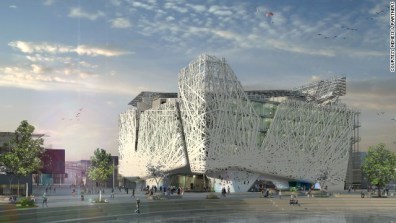 Telex: Space exploration has entered a new age as sentient robots – known as telexplorers – are sent out to explore distant exoplanets and communicate their findings back to Earth. But removed from their programmers and masters, the machines are beginning to get ideas of their own – ideas like the “right of discovery” (otherwise known as “finders keepers”).
Telex: Space exploration has entered a new age as sentient robots – known as telexplorers – are sent out to explore distant exoplanets and communicate their findings back to Earth. But removed from their programmers and masters, the machines are beginning to get ideas of their own – ideas like the “right of discovery” (otherwise known as “finders keepers”).
Neurology: Autonomous Aerial Vehicles (AAVs) are the new weapons in the drone wars. And the law states that wherever life and death decisions are to be made, a human operator needs to be at the helm. However, thanks to neural uploads and digital sentience, the definition of “human operator” has become a bit blurry.
Organic: The age of cybernetics is in full-swing, and people who are without enhancement are relegated to a new underclass known as “organics”. In this world, a young man begins looking for an upgrade that will allow him to escape this status and achieve a better life. But joining the club of enhanced humans may require him to make the ultimate sacrifice.
 Ware: Medicinal nanotechnology offers the promise of life extension, better health, and even clinical immortality. And major developers are willing to do anything in order to get their hands on the latest in it! But when a private contractor is paid to steal a cutting-edge strain of nanoware, he hatches a plan of his own.
Ware: Medicinal nanotechnology offers the promise of life extension, better health, and even clinical immortality. And major developers are willing to do anything in order to get their hands on the latest in it! But when a private contractor is paid to steal a cutting-edge strain of nanoware, he hatches a plan of his own.
Masquerade: In the not-too-distant future, personal holograms have raised costumes and disguises to a whole new level of authenticity. And in this age of moral relativism and legal flexibility, costume balls have become all the rage – especially ones that reenact historical periods where rules were firm and fixed.
Interview with the Extropian: The world’s first legally-recognized Extropian (aka. Transhuman) has returned to London after spending many years in orbit. He requests permission to once again walk freely in the land of his birth, but legal restrictions stand in his way. However, it seems that the Extropian’s plans are destined to come true, one way or another.
Part III: Infinitum
The third and final section takes a look at the late 21st century and everything after. Here, the stories reflect a life that has become truly infinite in possibility, filled with immense potential for growth, knowledge, and danger.
Domicile 4.5: The age of nanotechnology has matured to the point where just about everything is assembled by “smart machines” and any kind of matter can be upgraded. With things like money, poverty, wealth and disparity eliminated, life seems pretty good! But as always, the drive to “keep up with the Joneses” can lead people to test out new advances before they are ready, with scary consequences!
Yellowknife: Archaeologists have made a major breakthrough on Mars, finding the first evidence that sentient life existed on the planet many billions of years ago. However, Mars is the new frontier for human settlement, and protecting ancient cultural sites are not high on the government’s list of the priorities. As new land needs to be cleared to make way for more arrivals, Mars’ past is in danger of being buried and forgotten.
 Pax: Humanity has come a long way, but the scourge of total war remains. And when the trumpets sound, all citizens must do their part for the good of the war effort. But this is the age of neuromorphic viruses, which infect people’s minds with seditious ideas rather than killer diseases. And in an age of total war, the most subversive idea is that of peace.
Pax: Humanity has come a long way, but the scourge of total war remains. And when the trumpets sound, all citizens must do their part for the good of the war effort. But this is the age of neuromorphic viruses, which infect people’s minds with seditious ideas rather than killer diseases. And in an age of total war, the most subversive idea is that of peace.
Gravitation: In the far-flung depths of space, human beings intrepidly explore, looking for new worlds to inhabit. But time in the void and periods of extended isolation have a way of making the mind turn inward. There, buried beneath centuries of technological progress and domesticity, lie the source of both revelation and insanity, and the line between them is a fine one at best!
Jericho: In the distant future, planets are terraformed by Seedlings – cultures of intelligent nanomachines that are sent out in advance of settlers to prepare a planet for their arrival. But when a group of colonists arrive at their destination after many years in space, they find that the Seedlings have a little surprise waiting for them.
 Singular: Eons from now, all life in our galaxy has reached the point of an existential singularity – where matter and mind have come together to create massive, conscious entities known as Cognates. As every Cognate in the galaxy prepares to merge and form a single Cosmic Mind, one in particular looks back on its long and turbulent past, contemplating the moments that defined its existence as a sentient race known as “humanity”.
Singular: Eons from now, all life in our galaxy has reached the point of an existential singularity – where matter and mind have come together to create massive, conscious entities known as Cognates. As every Cognate in the galaxy prepares to merge and form a single Cosmic Mind, one in particular looks back on its long and turbulent past, contemplating the moments that defined its existence as a sentient race known as “humanity”.
* * *
And that’s about the gist of it, sorry it took so long to explain. I guess you could say a lot of thought went into it, but I’ll leave that for the readers to decide. Expect it soon, and look for the bright, brainy pic that adorns the cover!


October 3, 2014
The Future of Space: Smart, Stretchy, Skintight Spacesuits
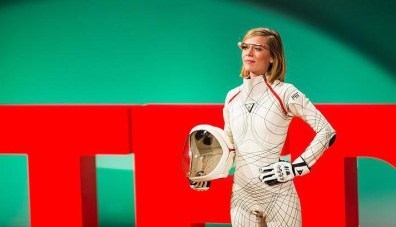 Spacesuits have come a long way from their humble origins in the 1960s. But despite decades worth of innovation, the basic design remains the same – large, bulky, and limiting to the wearer’s range of movement. Hence why a number of researchers and scientists are looking to create suits that are snugger, more flexible, and more ergonomic. One such group hails from MIT, with a skin-tight design that’s sure to revolutionize the concept of spacesuits.
Spacesuits have come a long way from their humble origins in the 1960s. But despite decades worth of innovation, the basic design remains the same – large, bulky, and limiting to the wearer’s range of movement. Hence why a number of researchers and scientists are looking to create suits that are snugger, more flexible, and more ergonomic. One such group hails from MIT, with a skin-tight design that’s sure to revolutionize the concept of spacesuits.
The team is led by Dava Newman, a professor of aeronautics and astronautics and engineering systems at MIT who previewed her Biosuit – playfully described by some as a “spidersuit” – at the TEDWomen event, held in San Fransisco in December of 2013. Referred to as a “second skin” suit, the design incorporates flexible, lightweight material that is lined with “tiny, muscle-like coils.”
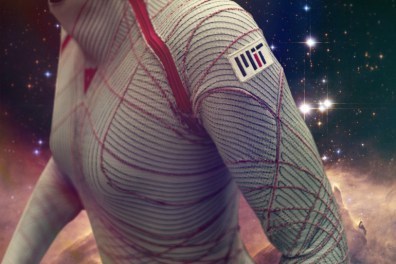 Speaking of the challenges of spacesuit design, and her team’s new concept for one, Dava Newman had the following to say in an interview with MIT news:
Speaking of the challenges of spacesuit design, and her team’s new concept for one, Dava Newman had the following to say in an interview with MIT news:
With conventional spacesuits, you’re essentially in a balloon of gas that’s providing you with the necessary one-third of an atmosphere [of pressure,] to keep you alive in the vacuum of space. We want to achieve that same pressurization, but through mechanical counterpressure — applying the pressure directly to the skin, thus avoiding the gas pressure altogether. We combine passive elastics with active materials.
Granted, Newman’s design is the first form-fitting spacesuit concept to see the light of day. Back in the 1960’s, NASA began experimenting with a suit that was modeled on human skin, the result of which was the Space Activity Suit (SAS). Instead of an air-filled envelope, the SAS used a skin-tight rubber leotard that clung to astronaut like spandex, pressing in to protect the wearer from the vacuum of space by means of counter pressure.
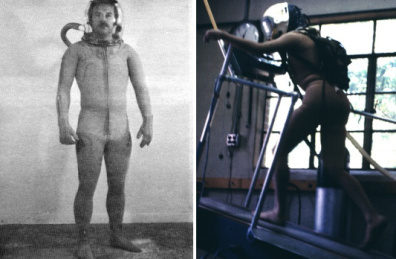 For breathing, the suit had an inflatable bladder on the chest and the astronaut wore a simple helmet with an airtight ring seal to keep in pressure. This setup made for a much lighter, more flexible suit that was mechanically far simpler because the breathing system and a porous skin that removed the need for complex cooling systems. The snag with the SAS was that materials in the days of Apollo were much too primitive to make the design practical.
For breathing, the suit had an inflatable bladder on the chest and the astronaut wore a simple helmet with an airtight ring seal to keep in pressure. This setup made for a much lighter, more flexible suit that was mechanically far simpler because the breathing system and a porous skin that removed the need for complex cooling systems. The snag with the SAS was that materials in the days of Apollo were much too primitive to make the design practical.
Little progress was made until Dava Newman and her team from MIT combined modern fabrics, computer modelling, and engineering techniques to produce the Biosuit. Though a far more practical counter-pressure suit than its predecessor, it was still plagued by one major drawback – the skintight apparatus was very difficult to put on. Solutions were proposed, such as a machine that would weave a new suit about the wearer when needed, but these were deemed impractical.
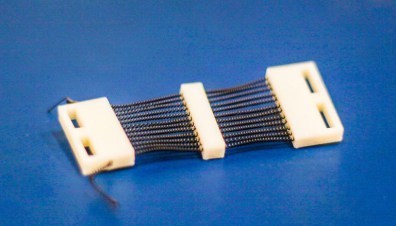 The new approach incorporates coils formed out of tightly packed, small-diameter springs made of a shape-memory alloy (SMA) into the suit fabric. Memory alloys are metals that can be bent or deformed, but when heated, return to their original shape. In this case, the nickel-titanium coils are formed into a tourniquet-like cuff that incorporates a length of heating wire. When a current is applied, the coil cinches up to provide the proper counter pressure needed for the Biosuit to work.
The new approach incorporates coils formed out of tightly packed, small-diameter springs made of a shape-memory alloy (SMA) into the suit fabric. Memory alloys are metals that can be bent or deformed, but when heated, return to their original shape. In this case, the nickel-titanium coils are formed into a tourniquet-like cuff that incorporates a length of heating wire. When a current is applied, the coil cinches up to provide the proper counter pressure needed for the Biosuit to work.
Bradley Holschuh, a post-doctorate in Newman’s lab, originally came up with the idea of a coil design. In the past, the big hurdle to second-skin spacesuits was how to get astronauts to squeeze in and out of the pressured, skintight suit. Holschuh’s breakthrough was to deploy shape-memory alloy as a technological end-around. To train the alloy, Holschuh wound raw SMA fiber into extremely tight coils and heated them to 450º C (842º F) to fashion an original or “trained” shape.
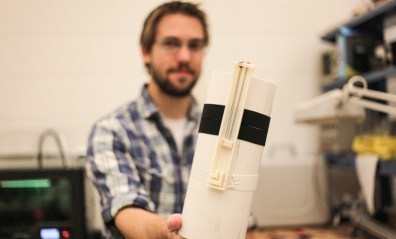 When the coil cooled to room temperature, it could be stretched out, but when heated to 60º C (140º F), it shrank back into its original shape in what the MIT team compared to a self-closing buckle. As spokespersons from MIT explained:
When the coil cooled to room temperature, it could be stretched out, but when heated to 60º C (140º F), it shrank back into its original shape in what the MIT team compared to a self-closing buckle. As spokespersons from MIT explained:
The researchers rigged an array of coils to an elastic cuff, attaching each coil to a small thread linked to the cuff. They then attached leads to the coils’ opposite ends and applied a voltage, generating heat. Between 60 and 160 C, the coils contracted, pulling the attached threads, and tightening the cuff.
In order to maintain it without continually heating the coils, however, the team needs to come up with some sort of a catch that will lock the coils in place rather than relying on a continuous supply of electricity and needlessly heating up the suit – yet it will still have to be easy to unfasten. Once Newman and her team find a solution to this problem, their suit could find other applications here on Earth.
 As Holschuh explained, the applications for this technology go beyond the spacesuit, with applications ranging from the militarized to the medical. But for the moment, the intended purpose is keeping astronauts safe and comfortable:
As Holschuh explained, the applications for this technology go beyond the spacesuit, with applications ranging from the militarized to the medical. But for the moment, the intended purpose is keeping astronauts safe and comfortable:
You could [also] use this as a tourniquet system if someone is bleeding out on the battlefield. If your suit happens to have sensors, it could tourniquet you in the event of injury without you even having to think about it… An integrated suit is exciting to think about to enhance human performance. We’re trying to keep our astronauts alive, safe, and mobile, but these designs are not just for use in space.
Considering the ambitious plans NASA and other government and private space agencies have for the near-future – exploring Mars, mining asteroids, building a settlement on the Moon, etc. – a next-generation spacesuit would certainly come in handy. With new launch systems and space capsules being introduced for just this purpose, it only makes sense that the most basic pieces of equipment get a refit as well.
And be sure to check out this video of Dava Newman showing her Biosuit at the TEDWomen conference last year:
Sources: gizmag.com, motherboard.vice.com, newsoffice.mit.edu


October 2, 2014
The Future of Space: Building A Space Elevator!
 Regularly scheduled trips to the Moon are one of many things science fiction promised us by the 21st century that did not immediately materialize. However, ideas are on the drawing board for making it happen in the coming decades. They include regular rocket trips, like those suggested by Golden Spike, but others have more ambitious plans. For example, there’s LiftPort – a company that hopes to build a space elevator straight to the Moon.
Regularly scheduled trips to the Moon are one of many things science fiction promised us by the 21st century that did not immediately materialize. However, ideas are on the drawing board for making it happen in the coming decades. They include regular rocket trips, like those suggested by Golden Spike, but others have more ambitious plans. For example, there’s LiftPort – a company that hopes to build a space elevator straight to the Moon.
When he was working with NASA’s Institute for Advanced Concepts in the early 2000s, LiftPort President Michael Laine began exploring the idea of a mechanism that could get people and cargo to space while remaining tethered to Earth. And he is certainly not alone in exploring the potential, considering the potential cost-cutting measures it offers. The concept is pretty straightforward and well-explored within the realm of science fiction, at least in theory.
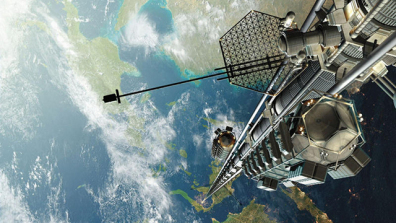 The space elevator concept is similar to swinging a ball on a string, except it involves a tether anchored to the Earth that’s about 500 km long. The other end is in anchored in orbit, attached to a space station that keeps the tether taut. Anything that needs to be launched into space can simply be fired up the tether by a series of rocket-powered cars, which then dock with the station and then launched aboard a space-faring vessel.
The space elevator concept is similar to swinging a ball on a string, except it involves a tether anchored to the Earth that’s about 500 km long. The other end is in anchored in orbit, attached to a space station that keeps the tether taut. Anything that needs to be launched into space can simply be fired up the tether by a series of rocket-powered cars, which then dock with the station and then launched aboard a space-faring vessel.
Compared to using rockets to send everything into space, the cost using the elevator is far less (minus the one-time astronomical construction fee). And while the materials do not yet exist to construct 0ne, suggestions have been floated for a Lunar Elevator. Taking advantage of the Moon’s lower gravity, and using the Earth’s gravity well to stabilize the orbital anchor, this type of elevator could be built using existing materials.
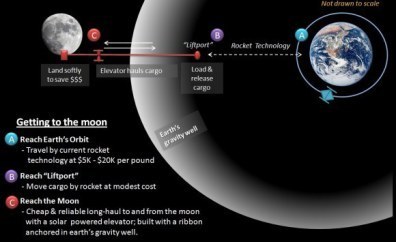 One such person is Laine, who believes the capability exists to build an elevator that would reach from to the Moon to a distance of 238,000 km towards the Earth. Hence why, started two and a half years ago, he struck out to try and bring this idea to reality. The concept behind the Moon Elevator is still consistent with the ball on the string analogy, but it is a little more complicated because of the Moon’s slow orbit around the Earth.
One such person is Laine, who believes the capability exists to build an elevator that would reach from to the Moon to a distance of 238,000 km towards the Earth. Hence why, started two and a half years ago, he struck out to try and bring this idea to reality. The concept behind the Moon Elevator is still consistent with the ball on the string analogy, but it is a little more complicated because of the Moon’s slow orbit around the Earth.
The solution lies in Lagrangian points, which are places of gravitational equilibrium between two bodies. It’s here that the gravitational pull of both bodies are equal, and so they cancel each other out. Lagrangian point L1 is about 55,000 kilometers from the Moon, and that’s the one Laine hopes to take advantage of. After anchoring one end of the “string” on the Moon’s surface, it will extend to L1, then from L1 towards Earth.
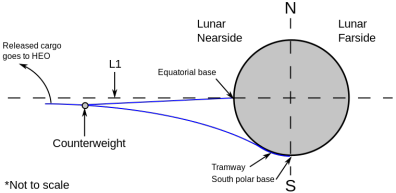 At the end of the string will be a counterweight made up of all the spent pieces of rocket that launched the initial mission to get the spike into the Moon. The counterweight will be in the right place for the Earth to pull on it gravitationally, but it will be anchored, through the Lagrange point, to the Moon. The force on both halves of the “string” will keep it taut. And that taut string will be a space elevator to the Moon.
At the end of the string will be a counterweight made up of all the spent pieces of rocket that launched the initial mission to get the spike into the Moon. The counterweight will be in the right place for the Earth to pull on it gravitationally, but it will be anchored, through the Lagrange point, to the Moon. The force on both halves of the “string” will keep it taut. And that taut string will be a space elevator to the Moon.
What’s more, Laine claims that the Moon elevator can be built off-the-shelf, with readily available technology. A prototype could be built and deployed within a decade for as little as $800 million, he claims. It would be a small version exerting just a few pounds of force on the anchor on the Moon, but it would lay the groundwork for larger follow-up systems that could transport more cargo and eventually astronauts.
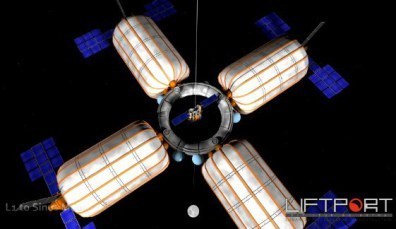 To demonstrate their concept, LiftPort is working on a proof-of-concept demonstration that will see a robot climb the tallest freestanding human structure in existence. This will consist of three large helium balloons held together on a tripod and a giant spool of Vectran fiber that is just an eighth of an inch think, but will be able to support 635 kilograms (1,400 pounds) and withstand strong winds.
To demonstrate their concept, LiftPort is working on a proof-of-concept demonstration that will see a robot climb the tallest freestanding human structure in existence. This will consist of three large helium balloons held together on a tripod and a giant spool of Vectran fiber that is just an eighth of an inch think, but will be able to support 635 kilograms (1,400 pounds) and withstand strong winds.
Vectran is the same material was used by NASA to create the airbags that allowed the Spirit and Opportunity’s rovers to land on Mars. Since it gets stronger as it gets colder, it is ideal for this high altitude test, which will be LiftPort’s 15th experiment and the 20th robot to attempt an ascent. Laine doesn’t have a prospective date for when this test will happen, but insists it will take place once the company is ready.
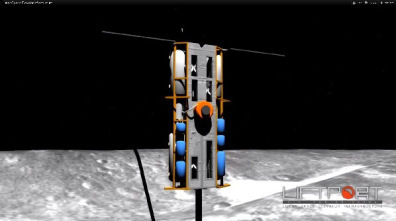 Regardless, when the test is conducted, it will be the subject of a new documentary by Ben Harrison. Having learned about Liftport back in 2012 when he stumbled across their Kickstarter campaign, Harrison donated to the project and did a brief film segment about it for Engadget. Since that time, he has been filming Liftport’s ongoing story as part of a proposed documentary.
Regardless, when the test is conducted, it will be the subject of a new documentary by Ben Harrison. Having learned about Liftport back in 2012 when he stumbled across their Kickstarter campaign, Harrison donated to the project and did a brief film segment about it for Engadget. Since that time, he has been filming Liftport’s ongoing story as part of a proposed documentary.
Much like Laine, Harrison and his team are looking for public support via Kickstarter so they can finish the documentary, which is entitled “Shoot the Moon”. Check out their Kickstarter page if feel like contributing. As of the time of writing, they have managed to raise a total of $14,343 of their $37,000 goal. And be sure to check out the promotional videos for the Liftport Group and Harrison’s documentary below:
Lunar Space Elevator Infrastructure Overview:
Shoot the Moon – Teaser Trailer:
Sources: motherboard.vice.com, lunarelevator.com


The Future is Here: The Soft Robotic Exosuit
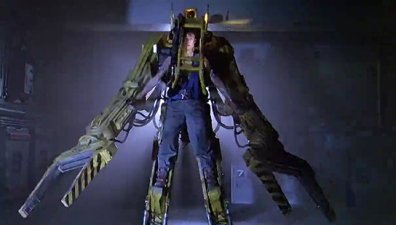 Robotic exoskeletons have come a long way, and are even breaking the mold. When one utters the term, it tends to conjure up images of a heavy suit with a metal frame that bestows the wearer super-human strength – as exemplified by Daewoo’s robot worker suits. And whereas those are certainly making an impact, there is a burgeoning market for flexible exoskeletons that would assist with everyday living.
Robotic exoskeletons have come a long way, and are even breaking the mold. When one utters the term, it tends to conjure up images of a heavy suit with a metal frame that bestows the wearer super-human strength – as exemplified by Daewoo’s robot worker suits. And whereas those are certainly making an impact, there is a burgeoning market for flexible exoskeletons that would assist with everyday living.
Researchers at Harvard’s Wyss Institute for Biologically Inspired Engineering have developed just such a device, a flexible fabric exoskeleton that earned them a $2.9 million grant by DARPA to continue developing the technology. Unlike the traditional exoskeleton concept, Harvard’s so-called “Soft Exosuit” is not designed to give the wearer vastly increase lifting capacity.
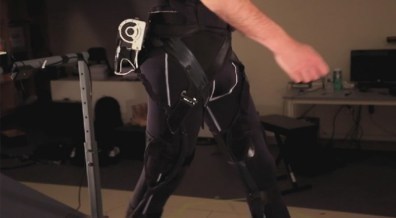 Instead, the Soft Exosuit works with the musculature to reduce injuries, improve stamina, and enhance balance even for those with weakened muscles. In some ways, this approach to wearable robotics is the opposite of past exoskeletons. Rather than the human working within the abilities and constraints of the exoskeleton, the exoskeleton works with the natural movements of the human wearer.
Instead, the Soft Exosuit works with the musculature to reduce injuries, improve stamina, and enhance balance even for those with weakened muscles. In some ways, this approach to wearable robotics is the opposite of past exoskeletons. Rather than the human working within the abilities and constraints of the exoskeleton, the exoskeleton works with the natural movements of the human wearer.
The big challenge of this concept is designing a wearable machine that doesn’t get in the way. In order to address this, the Wyss Institute researchers went beyond the usual network of fabric straps that hold the suit in place around the user’s limbs. In addition, they carefully studied the way people walk and determined which muscles would benefit from the added forces offered by the Exosuit.
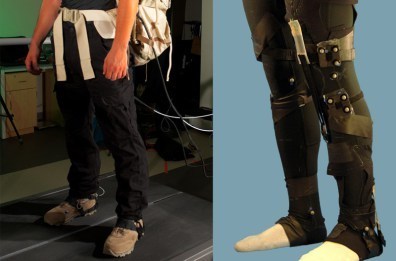 With a better understanding of the biomechanics involved, the team decided to go with a network of cables to transmit forces to the joints. Batteries and motors are mounted at the waist to avoid having any rigid components interfering with natural joint movement. This allows the wearer the freedom to move without having to manually control how the forces are applied.
With a better understanding of the biomechanics involved, the team decided to go with a network of cables to transmit forces to the joints. Batteries and motors are mounted at the waist to avoid having any rigid components interfering with natural joint movement. This allows the wearer the freedom to move without having to manually control how the forces are applied.
Basically, the wearer does not have to push on a joystick, pull against restraints, or stick to a certain pace when walking with the Exosuit. The machine is supposed to work with the wearer, not the other way around. The designers integrated a network of strain sensors throughout the straps that transmit data back to the on-board microcomputer to interpret and apply supportive force with the cables.
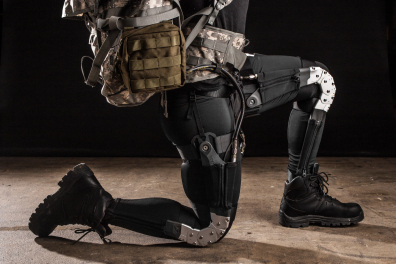 DARPA is funding this project as part of the Warrior Web program, which seeks to reduce musculoskeletal injuries for military personnel. However, Harvard expects this technology to be useful in civilian applications as well. Anyone who needs to walk for long periods of time at work could benefit from the Soft Exosuit, which is less expensive and more comfortable that conventional exosuits; and with a little rescaling, could even be worn under clothing.
DARPA is funding this project as part of the Warrior Web program, which seeks to reduce musculoskeletal injuries for military personnel. However, Harvard expects this technology to be useful in civilian applications as well. Anyone who needs to walk for long periods of time at work could benefit from the Soft Exosuit, which is less expensive and more comfortable that conventional exosuits; and with a little rescaling, could even be worn under clothing.
But the greatest impact of the Soft Exosuit is likely to be for those who suffer from a physical impairment and/or injuries. Someone that has trouble standing or walking could possibly attain normal mobility with the aid of this wearable robot. And people working their way through physiotherapy would find it very useful in assisting them with restoring their muscles and joints to their usual strength.
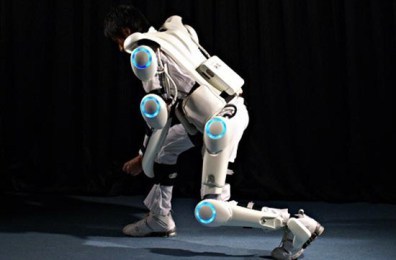 The team plans to collaborate with clinical partners to create a version of the exosuit for just this purpose. What the Wyss Institute has demonstrated so far has just been the general proof-of-concept for the Soft Exosuit. In time, and with further refinements, we could see all sorts of versions becoming available – from the militarized to the medical, from mobility assistance for seniors, to even astronauts looking to prevent atrophy.
The team plans to collaborate with clinical partners to create a version of the exosuit for just this purpose. What the Wyss Institute has demonstrated so far has just been the general proof-of-concept for the Soft Exosuit. In time, and with further refinements, we could see all sorts of versions becoming available – from the militarized to the medical, from mobility assistance for seniors, to even astronauts looking to prevent atrophy.
And as always, technology that is initially designed to assist and address mobility issues is likely to give way to enhancement and augmentation. It’s therefore not hard to imagine a future where soft robotic exosuits are produced for every possible use, including recreation and transhumanism. Hell, it may even be foreseeable that an endoskeleton will be possible in the not-too-distant future, something implantable that can do the same job but be permanent…
Cool and scary! And be sure to check out this video from the Wyss Institute being tested:
Source: extremetech.com, wyss.harvard.edu, darpa.mil


October 1, 2014
500,000 Hits!
 This morning, I became aware that this blog, storiesbywilliams, has just reached another milestone. Yes, after three and a half years, this humble site has reached half a million hits. And as usual, I’d like to include a few other pertinent numbers to help put this all in perspective. For example, since this blog went public, it has reached the following:
This morning, I became aware that this blog, storiesbywilliams, has just reached another milestone. Yes, after three and a half years, this humble site has reached half a million hits. And as usual, I’d like to include a few other pertinent numbers to help put this all in perspective. For example, since this blog went public, it has reached the following:
500,180 hits (as of writing this)
7041 Comments
2089 Followers
1834 Posts
Once again, I can only say thank you to all those folks who have helped make this possible. You know who you are ;) And just for once, I thought I might let be things brief and poignant. So thanks and congrats all around, and onto the next thing!


The Future of Computing: Towards a Quantum Internet
 For decades, the dream of quantum computing – a system that makes direct use of quantum-mechanical phenomena, such as superposition and entanglement, to perform operations on data- has been just that. Much the same is true of principles that expand on this concept, such as quantum encryption and a quantum internet. But thanks to ongoing studies and experiments by researchers and scientists, that dream may be closer to fruition than ever.
For decades, the dream of quantum computing – a system that makes direct use of quantum-mechanical phenomena, such as superposition and entanglement, to perform operations on data- has been just that. Much the same is true of principles that expand on this concept, such as quantum encryption and a quantum internet. But thanks to ongoing studies and experiments by researchers and scientists, that dream may be closer to fruition than ever.
This time the progress comes from a research team out of Professor Nicolas Gisin lab’s in the physics department at the University of Geneva. The team achieved the teleportation of the quantum state of a photon – this time, the photon’s polarization – to a crystal-encased photon more than 25 kilometers (15.5 miles) away. The distance breaks the previous record of 6 kilometers (3.7 miles) set 10 years ago by the same team using the same method.
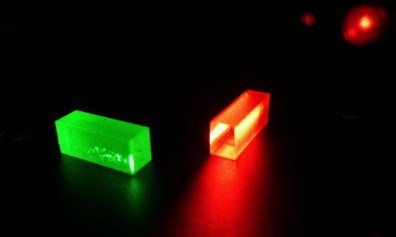 This is the latest in a series of experiments the group, led by physicist Félix Bussières, have conducted over the last decade in an effort to better understand quantum data transfer. In this particular experiment, the researchers stored one photon in a crystal, essentially creating a solid-state memory bank. They sent another photon of a different wavelength 25 km away through optical fiber, whereupon they had it interact with a third photon.
This is the latest in a series of experiments the group, led by physicist Félix Bussières, have conducted over the last decade in an effort to better understand quantum data transfer. In this particular experiment, the researchers stored one photon in a crystal, essentially creating a solid-state memory bank. They sent another photon of a different wavelength 25 km away through optical fiber, whereupon they had it interact with a third photon.
Because the first two photons were entangled – a quantum property whereby particles can speak to each other across an infinite distance – the interaction sent the data to the photo stored in the memory bank, where the team was able to retrieve it. Or as the team explained, using pool balls as an anology:
It is a bit like a game of billiards, with a third photon hitting the first which obliterates both of them. Scientists measure this collision. But the information contained in the third photon is not destroyed – on the contrary it finds its way to the crystal which also contains the second entangled photon.
 This is all in keeping with the concept of quantum teleportation – the moving of quantum data from one location to another without having to travel the distance between them. That means that the speed at which data moves isn’t necessarily limited by the constraints of space and time. In that sense, it’s easier to think of this kind of teleporting not as a “beam me up” scenario, but as a kind of instantaneous awareness between two points.
This is all in keeping with the concept of quantum teleportation – the moving of quantum data from one location to another without having to travel the distance between them. That means that the speed at which data moves isn’t necessarily limited by the constraints of space and time. In that sense, it’s easier to think of this kind of teleporting not as a “beam me up” scenario, but as a kind of instantaneous awareness between two points.
While this may not sound as exciting as Ursula K. Le Guin’s Ansible communicator, the Alcubierre warp drive, or the “Star Trek”-style transporter, it opens up startling possibilities. For instance, in addition to bringing us closer to hard drives that can store quantum bits (aka. qubits), this is a major step in the direction of a quantum internet and encryption- where information is sent around the world instantaneously and is extremely secure.
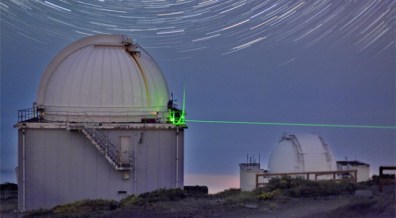 This also opens doors for space exploration, where astronauts in space, rovers on Mars, and satellites in deep space will be able to communicate instantly with facilities here on Earth. For non-quantum physicists, the novel aspect of this experiment is that the team achieved teleportation of data across the kind of optic fiber that forms the basis of modern-day telecommunications, which means no major overhaul will be needed to make quantum internet a reality.
This also opens doors for space exploration, where astronauts in space, rovers on Mars, and satellites in deep space will be able to communicate instantly with facilities here on Earth. For non-quantum physicists, the novel aspect of this experiment is that the team achieved teleportation of data across the kind of optic fiber that forms the basis of modern-day telecommunications, which means no major overhaul will be needed to make quantum internet a reality.
As physicists continue to push the boundaries of our understanding about the quantum world, we’re getting closer to translating these kinds of advancements in market applications. Already, quantum computing and quantum encryption are making inroads into the sectors of banking security, medical research and other areas in need of huge computing muscle and super-fast information transfer.
 With the rise of a potential quantum Internet on the horizon, we could see the next jump in communication happen over the next couple of decades. So while we’re a long way off from trying to pry quantum teleportation and entanglement from the grip of the theoretical realm, scientists are making headway, if only a handful of kilometers at a time. But every bit helps, seeing as how routing stations and satellites can connect these distances into a worldwide network.
With the rise of a potential quantum Internet on the horizon, we could see the next jump in communication happen over the next couple of decades. So while we’re a long way off from trying to pry quantum teleportation and entanglement from the grip of the theoretical realm, scientists are making headway, if only a handful of kilometers at a time. But every bit helps, seeing as how routing stations and satellites can connect these distances into a worldwide network.
In fact, research conducted by other labs have not only confirmed that quantum teleportation can reach up to 143 km (89 miles) in distance, but that greater and greater properties can be beamed. This distance is especially crucial since it happens to be close to what lies between the Earth and a satellite in Low-Earth Orbit (LEO). In short, we humans could construct a quantum internet using optic cables or satellites, mirroring the state of telecommunications today.
And when that happens, get ready for an explosion in learning, processing and information, the likes of which has not been seen since the creation of the printing press or the first internet revolution!
Sources: cnet.com, technologyreview.com, nature.com


September 30, 2014
Biotech Breakthrough: Fully-Functioning Organ Grown
 Organ transplants are one of the greatest medical advances of the 20th century. Where patients once faced disability or even death, they’ve been given a new lease on life in the form of donated organs. The problem is that the supply of suitable donor organs has always been in a state of severe shortage. Not only is it entirely dependent on accident victims who have signed their organ donor card, there is also the issue of genetic suitability.
Organ transplants are one of the greatest medical advances of the 20th century. Where patients once faced disability or even death, they’ve been given a new lease on life in the form of donated organs. The problem is that the supply of suitable donor organs has always been in a state of severe shortage. Not only is it entirely dependent on accident victims who have signed their organ donor card, there is also the issue of genetic suitability.
For decades, scientists have worked on producing lab-grown organs to pick up the slack left by the donor system. The research has yielded some positive results in the form of simple organs, such as the artificial esophagus and “mini-kidneys.” Nevertheless, the creation of whole, complex, functional organs that can be swapped for damaged or destroyed ones has remained out of reach. That is, until now.
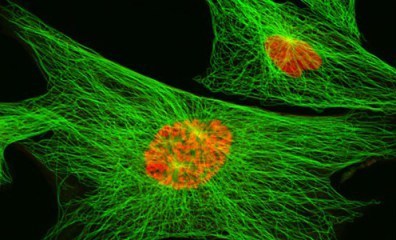 Scientists at the University of Edinburgh have grown a fully-functional organ inside a mouse, a breakthrough that opens up the possibility of one day manufacturing compatible organs for transplant without the need for donors. Using mouse embryo cells, scientists at the MRC Centre for Regenerative Medicine created an artificial thymus gland with the same structure and function as an adult organ.
Scientists at the University of Edinburgh have grown a fully-functional organ inside a mouse, a breakthrough that opens up the possibility of one day manufacturing compatible organs for transplant without the need for donors. Using mouse embryo cells, scientists at the MRC Centre for Regenerative Medicine created an artificial thymus gland with the same structure and function as an adult organ.
The University of Edinburgh team produced the artificial thymus gland using a technique that the scientists call “reprogramming.” It involves fibroblast cells, which form connective tissue in animals, being removed from a mouse embryo and then treated with a protein called FOXN1 to change them into thymic epithelial cells (TEC). These were then mixed with other thymus cells and transplanted into living mice by grafting them to the animal’s kidneys.
 Then, over a period of four weeks, the cells grew into a complete, functioning thymus gland that can produce T cells – an important part of the immune system. According to the scientists, this development goes beyond previous efforts because the thymus serves such a key part in protecting the body against infection and in eliminating cancer cells. This is clearly the first step on the road towards complete organ development.
Then, over a period of four weeks, the cells grew into a complete, functioning thymus gland that can produce T cells – an important part of the immune system. According to the scientists, this development goes beyond previous efforts because the thymus serves such a key part in protecting the body against infection and in eliminating cancer cells. This is clearly the first step on the road towards complete organ development.
The team is currently working on refining the reprogramming technique in the hope of developing a practical medical procedure, such as creating bespoke thymus glands made to match a patient’s own T cells. They see the development of a lab-grown thymus as a way of treating cancer patients whose immune system has been compromised by radiation or chemotherapy, and children born with malfunctioning thymuses.
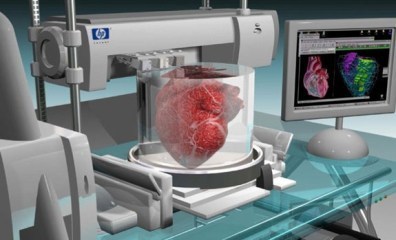 According to Rob Buckle, Head of Regenerative Medicine at the MRC, the potential is tremendous and far-reaching:
According to Rob Buckle, Head of Regenerative Medicine at the MRC, the potential is tremendous and far-reaching:
Growing ‘replacement parts’ for damaged tissue could remove the need to transplant whole organs from one person to another, which has many drawbacks – not least a critical lack of donors. This research is an exciting early step towards that goal, and a convincing demonstration of the potential power of direct reprogramming technology, by which one cell type is converted to another. However, much more work will be needed before this process can be reproduced in the lab environment, and in a safe and tightly controlled way suitable for use in humans.
Combined with “bioprinting” – where stem cells are printed into organs using a 3-D printer – organs transplants could very well evolve to the point where made-to-order replacements are fashioned from patient’s own genetic material. This would not only ensure that there is never any shortages or waiting lists, but that there would be no chance of incompatibility or donor rejection.
Another step on the road to clinical immortality! And be sure to check out this video of the artificial thymus gland being grown, courtesy of the Medical Research Council:
Source: gizmag.com, crm.ed.ca.uk


Ending Cancer: Cancer-Hunting Nanoparticles
 When it comes to diseases and conditions that have long been thought to be incurable – i.e. cancer, diabetes, HIV – nanoparticles are making a big impact. In the case of HIV, solutions have been developed where gold nanoparticles can deliver bee venom or HIV medication to cells of the virus, while leaving healthy tissue alone. As for diabetes and cancer, the same concept has proven useful at both seeking out and delivering medication to the requisite cells.
When it comes to diseases and conditions that have long been thought to be incurable – i.e. cancer, diabetes, HIV – nanoparticles are making a big impact. In the case of HIV, solutions have been developed where gold nanoparticles can deliver bee venom or HIV medication to cells of the virus, while leaving healthy tissue alone. As for diabetes and cancer, the same concept has proven useful at both seeking out and delivering medication to the requisite cells.
However, a new breakthrough may be offering cancer patients something more in the coming years. In what appears to be a promising development, researchers at the University of California Davis (UC Davis) Cancer Center have created a multi-tasking nanoparticle shown to be effective both in the diagnosis of a tumor and attacking its cells – a flexibility that could lead to new treatment options for cancer patients.
 One of the big challenges in developing multitasking nanoparticles is that they are traditional designed with one purpose in mind. They are constructed using either inorganic or organic compounds, each with strengths of their own. Inorganic nanoparticles, such those made from gold, are effective in imaging and diagnostics. Organic nanoparticles, on the other hand, are biocompatible and provide a safe method of drug delivery.
One of the big challenges in developing multitasking nanoparticles is that they are traditional designed with one purpose in mind. They are constructed using either inorganic or organic compounds, each with strengths of their own. Inorganic nanoparticles, such those made from gold, are effective in imaging and diagnostics. Organic nanoparticles, on the other hand, are biocompatible and provide a safe method of drug delivery.
The nanoparticles developed at UC Davis are made from a polymer composed of organic compounds porphyrin and cholic acid, which is produced by the liver. The researchers then added cysteine – an amino acid that prevents it from releasing its payload prematurely – to create a fluorescent carbon nanoparticle (CNP). The team then tested the new nanoparticle with a range of tasks, both in vitro and in vivo (aka. in a solution of cells and in living organisms).
 They found the particle was effective in delivering cancer-fighting drugs such as doxorubicin (commonly used in chemotherapy). In addition, they found that while applying light (known as photodynamic therapy), the nanoparticles release reactive molecules called singlet oxygen that destroy tumor cells, while heating them with a laser (known as photothermal therapy) provided another way for the particles to destroy tumors.
They found the particle was effective in delivering cancer-fighting drugs such as doxorubicin (commonly used in chemotherapy). In addition, they found that while applying light (known as photodynamic therapy), the nanoparticles release reactive molecules called singlet oxygen that destroy tumor cells, while heating them with a laser (known as photothermal therapy) provided another way for the particles to destroy tumors.
One notable finding was that the release of a payload sped up as the nanoparticle was exposed to light. The researchers claim this ability to manipulate the rate at which the particles release chemotherapy drugs from inside the tumor could help to minimize toxicity. This is a big plus considering that all known cancer treatments – i.e. chemotherapy, medication, radiation – all come with side effects and have a high risk causing damage to the patient’s healthy tissue.
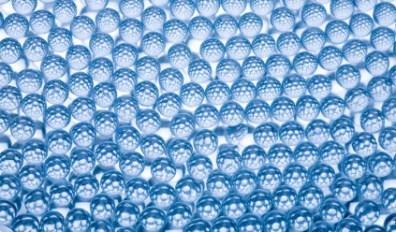 In relation to imaging and phototherapy, the nanoparticle remained in the body for extended periods and bonded with imaging agents. And because CNPs are drawn more to tumor tissue than normal tissue, it helps to improve contrast and light them up for MRI and PET scans. This effectively makes the UC Davis nanoparticle a triple threat as far as cancer treatments are concerned.
In relation to imaging and phototherapy, the nanoparticle remained in the body for extended periods and bonded with imaging agents. And because CNPs are drawn more to tumor tissue than normal tissue, it helps to improve contrast and light them up for MRI and PET scans. This effectively makes the UC Davis nanoparticle a triple threat as far as cancer treatments are concerned.
As Yuanpei Li, research faculty member from the UC Davis Cancer Center, explains it:
This is the first nanoparticle to perform so many different jobs. From delivering chemo, photodynamic and photothermal therapies to enhancing diagnostic imaging, it’s the complete package.
The team is now focusing on further pre-clinical studies, with a view to advancing to human trials if all goes to plan. And this is not the only breakthrough inolving cancer-fighting nanoparticles to be made in recent months. Back in April, scientists at MIT reported the creation a revolutionary building block technique that’s enabled them to load a nanoparticle with three drugs, and claim it could be expanded to allow one to carry hundreds more.
 Typical nanoparticle designs don’t allow for scaling, since they call for building a nanoparticle first, then encapsulating the drug molecules within it or chemically attaching the molecules to it. Attempting to add more drugs makes assembling the final nanoparticle exponentially more difficult. To overcome these limitations, Jeremiah Johnson, an assistant professor of chemistry at MIT, created nanoparticle building blocks that already included the desired drug.
Typical nanoparticle designs don’t allow for scaling, since they call for building a nanoparticle first, then encapsulating the drug molecules within it or chemically attaching the molecules to it. Attempting to add more drugs makes assembling the final nanoparticle exponentially more difficult. To overcome these limitations, Jeremiah Johnson, an assistant professor of chemistry at MIT, created nanoparticle building blocks that already included the desired drug.
Called “brush first polymerization,” the approach allows the researchers to incorporate many drugs within a single nanoparticle and control the precise amounts of each. In addition to the drug, each tiny building block contains a linking unit enabling it to easily connect to other blocks, and a protective compound to ensure that the drug stays intact until it enters the cell.
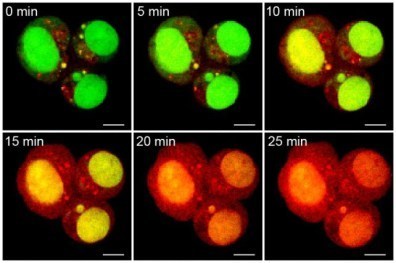 The approach not only allows different drug-containing blocks to be assembled into specific structures, but it also enables each drug to be released separately via different triggers. The team has tested its triple threat nanoparticles, containing drugs typically used to treat ovarian cancer – such as doxorubicin, cisplatin and camptothecin – against lab-grown ovarian cancer cells.
The approach not only allows different drug-containing blocks to be assembled into specific structures, but it also enables each drug to be released separately via different triggers. The team has tested its triple threat nanoparticles, containing drugs typically used to treat ovarian cancer – such as doxorubicin, cisplatin and camptothecin – against lab-grown ovarian cancer cells.
The results demonstrated the new nanoparticles’ ability to destroy cancer cells at a higher rate than those carrying fewer drugs. As Johnson explained it:
This is a new way to build the particles from the beginning. If I want a particle with five drugs, I just take the five building blocks I want and have those assemble into a particle. In principle, there’s no limitation on how many drugs you can add, and the ratio of drugs carried by the particles just depends on how they are mixed together in the beginning… We think it’s the first example of a nanoparticle that carries a precise ratio of three drugs and can release those drugs in response to three distinct triggering mechanisms.
In this case, the cisplatin is delivered the instant the particle enters the cell, as it reacts to the presence of an antioxidant found in the cells called glutathione. When the nanoparticle encounters a cellular enzyme called esterases it releases the second drug, camptothecin. Shining ultraviolet light triggers the release of the remaining doxorubicin, leaving behind only the biodegradable remnants of the nanoparticle.
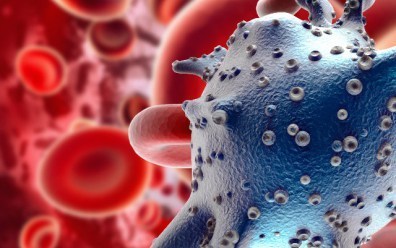 The researchers believe this approach can potentially be used to link hundreds of building blocks to create multidrug-carrying nanoparticles, and pave the way for entirely new types of cancer treatments, free from the damaging side effects that accompany traditional chemotherapy. The MIT team is currently working on making nanoparticles that can deliver four drugs, and are also engaged in tests that treat tumor cells in animals.
The researchers believe this approach can potentially be used to link hundreds of building blocks to create multidrug-carrying nanoparticles, and pave the way for entirely new types of cancer treatments, free from the damaging side effects that accompany traditional chemotherapy. The MIT team is currently working on making nanoparticles that can deliver four drugs, and are also engaged in tests that treat tumor cells in animals.
Until recently, the fight against cancer has been characterized by attrition. While treatments exist, they tend to be a balancing act – inflicting harm and poisoning the patient in small doses with the hope of killing the cancer and not the host. Smarter treatments that target the disease while sparing the patient from harm are just what is needed to turn the tide in this fight and bring cancer to an end.
Sources: gizmag.com, (2), nature.com, ucdmc.ucdavis.edu


September 29, 2014
Judgement Day Update: Cheetah Robot Unleashed!
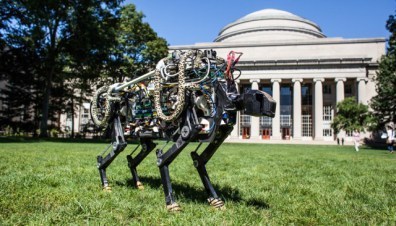 There have been lots of high-speed bio-inspired robots in recent years, as exemplified by Boston Dynamics WildCat. But MIT’s Cheetah robot, which made its big debut earlier this month, is in a class by itself. In addition to being able to run at impressive speeds, bound, and jump over obstacles, this particular biomimetic robot is also being battery-and-motor driven rather than by a gasoline engine and hydraulics, and can function untethered (i.e. not connected to a power source).
There have been lots of high-speed bio-inspired robots in recent years, as exemplified by Boston Dynamics WildCat. But MIT’s Cheetah robot, which made its big debut earlier this month, is in a class by itself. In addition to being able to run at impressive speeds, bound, and jump over obstacles, this particular biomimetic robot is also being battery-and-motor driven rather than by a gasoline engine and hydraulics, and can function untethered (i.e. not connected to a power source).
While gasoline-powered robots are still very much bio-inspired, they are dependent on sheer power to try and match the force and speed of their flesh-and-blood counterparts. They’re also pretty noisy, as the demonstration of the WildCat certainly showed (video below). MIT’s Cheetah takes the alternate route of applying less power but doing so more efficiently, more closely mimicking the musculoskeletal system of a living creature.
[image error]This is not only a reversal on contemporary robotics, but a break from history. Historically, to make a robot run faster, engineers made the legs move faster. The alternative is to keep the same kind of frequency, but to push down harder at the ground with each step. As MIT’s Sangbae Kim explained:
Our robot can be silent and as efficient as animals. The only things you hear are the feet hitting the ground… Many sprinters, like Usain Bolt, don’t cycle their legs really fast. They actually increase their stride length by pushing downward harder and increasing their ground force, so they can fly more while keeping the same frequency.
MIT’s Cheetah uses much the same approach as a sprinter, combining custom-designed high-torque-density electric motors made at MIT with amplifiers that control the motors (also a custom MIT job). These two technologies, combined with a bio-inspired leg, allow the Cheetah to apply exactly the right amount of force to successfully bound across the ground and navigate obstacles without falling over.
[image error]When it wants to jump over an obstacle, it simply pushes down harder; and as you can see from the video below, the results speak for themselves. For now, the Cheetah can run untethered at around 16 km/h (10 mph) across grass, and hurdle over obstacles up to 33 centimeters high. The Cheetah currently bounds – a fairly simple gait where the front and rear legs move almost in unison – but galloping, where all four legs move asymmetrically, is the ultimate goal.
With a new gait, and a little byte surgery to the control algorithms, MIT hopes that the current Cheetah can hit speeds of up to 48 km/h (30 mph), which would make it the fastest untethered quadruped robot in the world. While this is still a good deal slower than the real thing – real cheetah’s can run up to 60 km/h (37 mph) – it will certainly constitute another big step for biomimetics and robotics.
Be sure to check out the video of the Cheetah’s test, and see how it differs from the Boston Dynamics/DARPA’s WildCat’s tests from October of last year:
Source:
extremetech.com
 [image error]
[image error]




